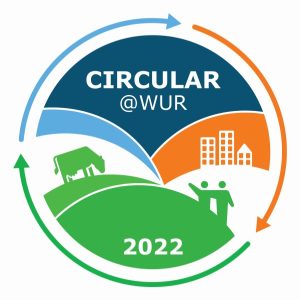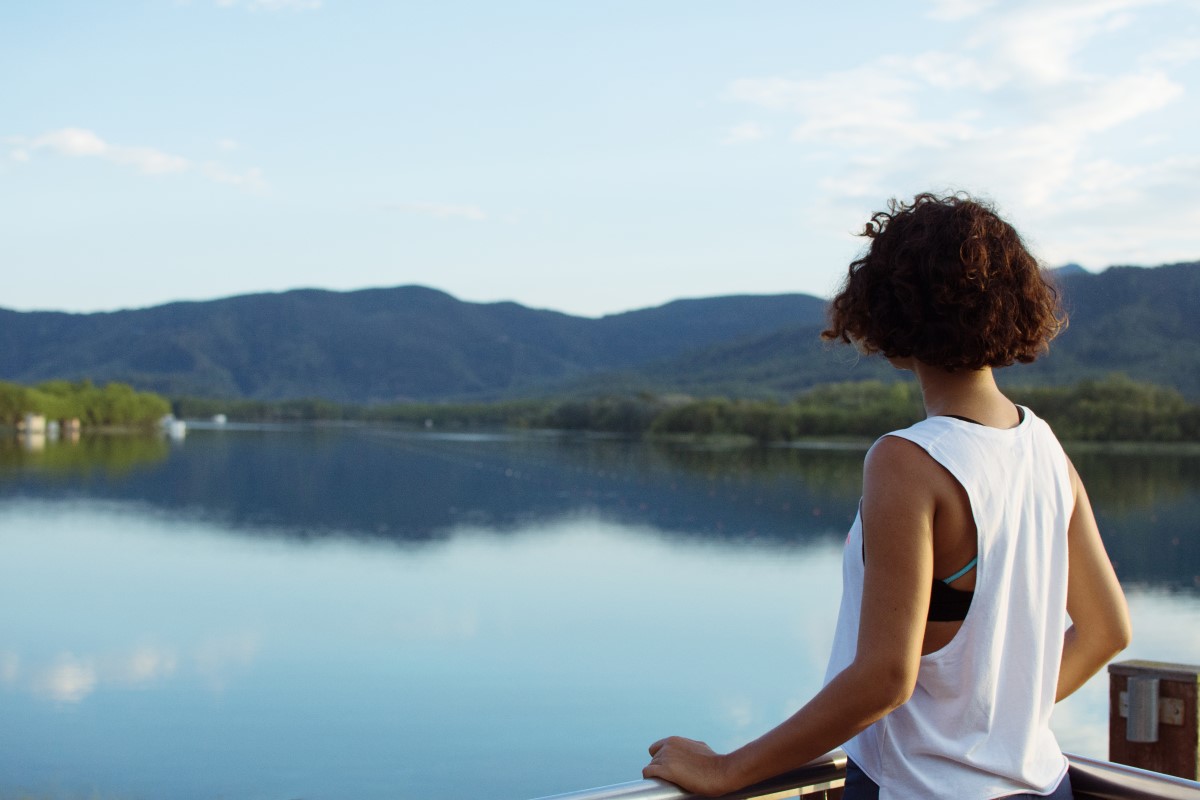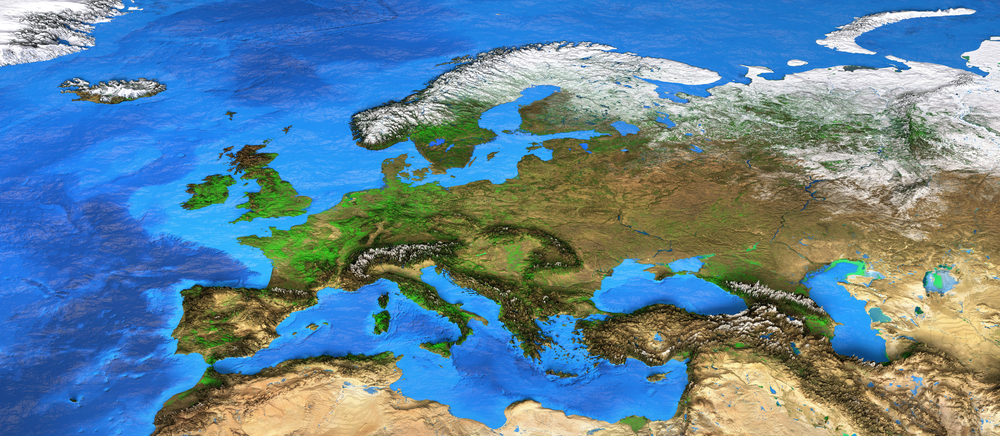Europe’s waters in 2050
This blog was written by Marnix Poelman and Catharien Terwisscha van Scheltinga. It is part four of a series on a circular and climate neutral Europe in 2050.
It is 2050 and Europe is completely circular and climate-neutral. What do you see around you? That is the question we spread within WUR. Based on all the received input, we wrote four inspiring future stories about how Europe could look in 2050. The stories are written from an I perspective to present a future and not the future. The topics of the stories are urban areas, agricultural areas, forest and nature areas and water bodies. This work is part of the One Wageningen challenge to develop a climate knowledge agenda for WUR and is funded by the KB programme Circular and Climate neutral. In this series of blogs, we want to share these stories with you. This is the fourth story in the series.
It’s July 2050. I just returned from a boat trip through Europe, as a member of the EU future water team. This team was established after the droughts of 2030, which were followed by unusual rainfall events, causing severe floods throughout Europe. In 20 years, we have achieved quite a lot in the transition towards more integrated water management, combining urban and city development, agriculture and nature.
The reason for our trip was to study the measures Europe has taken to have climate-neutral and climate-resilient water bodies. We are currently preparing the successor of the water framework directive on water quality. This will be an action plan for integrated water management: addressing water storage, water quality and water availability. Water management in urban and agricultural areas are an integral part of this action plan.
We started in Hungary and made our way over the Danube, Europe’s second longest river that flows from Germany to the Black Sea. We travelled over land to Belgium, and then by boat over the Scheldt River and delta. We ended on the Dutch coast of the North Sea. In every country I saw how policymakers, stakeholders and scientists tried to find a balance to cope with the effects of climate change: do we adapt or do we intervene?
Struggle between scarcity and availability
All through Europe I saw the struggle between water scarcity and water availability. Water-intensive land use functions, like agriculture, were shifted to areas where water can still be made available throughout the year. Climate change and biodiversity considerations are an integral part of such shifts. The water management of selected forests, nature areas and farm fields is focusing on increasing the water holding capacity and biodiversity.
At the same time this paves the way to get rid of excess water caused by the intensive rains which are now ‘normal’ in our european climate. For example: farm fields are no longer monocultured areas as was normal in the ‘20s , all areas I saw were polyculture crops, resulting in improved ground water storage and a more biodiverse animal and plant life. Structural planning of ground water levels is a key point and requires a maximum of multi-stakeholder flexibility to adapt.
Room for the rivers
We did our trip mainly by boat since the waterways are significantly more used for (electric) transport of people and goods. I saw the Additional Room for the River (successor of Room for the River (20s)) programmes applied all over Europe. In these programmes, rivers are given space for floods in excessive water periods. These flood plains combined with extra water storage in urban areas and man-made lakes upstream, makes the Room for the Rivers programme very successful. Furthermore, smart agricultural production systems have been developed, making a more balanced use of the flood plains.
Of course, it was quite a challenge, as these processes affected many people. Many of them had to leave their house or agricultural business, to make more room for the water. Design sessions and smart investment plans for rural and urban development helped to provide engagement in joint solutions for water bodies.Inhabitants and farmers were provided with suitable alternatives to prolongate their livelihood and business, although at different locations and in different business setting. They are now situated in urban and rural areas and re-designed their business making maximum benefit of the new water management strategy.
The research on parallel groins provided new design solutions, new solutions for dry periods have been developed and the upstream downstream linkages have been improved.
Saline-brackish gradient
As we approached the coastal zones, we experienced a wide variety of ongoing adaptation measures. I saw various nature-based solutions along the saline-brackish gradient. For instance, I saw oyster reefs, nature restoration to support marine nursery grounds, double dikes for protection and nature development, and grazing on salt marshes. Overall, in the delta area, there is no constant fight against the water, but production has been adapted to saline conditions and combined with sediment and carbon capture. The Delta institute in Zeeland, established in the 2020-s, is now a world-famous knowledge partner on saline agriculture.
Then we came to the seaside. A lot has changed here over the past years. Climate change caused the sea temperature to rise. Because the rate of change in temperature is extremely high, species have difficulties to adapt and migrate fast enough. In the past 30 years, we have tried to align the natural adaptation of fish with anthropological interventions to support changes in the ecosystem to maintain the may ecological functions. Reef structures originally designed for cod, are now occupied by other warmer-water species, such as sea bass. Fisheries programs are focusing on the harvest of the surplus of the ecosystem. Natural and semi-natural reefs are planned in such a way that the ecosystem is readapting, considering a maximization of ecological functions, improving nutrient turnover and long-term carbon storage.
Climate-smart and adaptable production systems
Many shipping companies and ports are sustainable, coastal ports have adapted to provide excellent services for electric, hydrogen and wind driven logistics, making use of the clean energy provided by wind parks at sea. Although investments in wind farms are done, the transition to alternative energy sources and energy carriers such as hydrogen are currently taking place. The infrastructure of wind farms installed in the last decade already adapted to these changes.
Aquaculture has been moved further offshore, out of the coastal region, and is low-carbon and equitable. The production systems are designed in climate-smart and adaptable ways, making it possible to redirect production to climate change effects, both technically as well as biologically. These systems provide biomass, are fully implemented in the food system, and are used to return nutrients to land, fix carbon, and provide a basis for ecological developments at sea.
The beauty is: all these developments were planned and implemented in ways that effectively engaged all stakeholders affected. European countries decided together what the best spots were to develop energy parks and aquaculture, to really preserve ecological systems.
Have I told you about the natural fish we ate during our European tour? As a result of the EU agreements, the water system from coast to the hindland is not only designed to prevent salt water to enter, but also to open barriers for migration opportunities for fish. This created a network of migration routes, resulting in an increase of stocks of fish and an improved ecological function of rivers, and streams. Restoration programs are only functional because of the smart and integral choices for water infrastructure projects in the past.
From mono-sectoral to integrated solutions
What did I learn during my trip? I saw a lot of positive developments that we can build on for the successor of the water framework directive on water quality. It was inspiring to see that many countries already jointly organized an active transition of agriculture, city planning and other functions to find solutions for water excess and drought problems. Not only did I learn how the farmers dealt with the new water challenge, also the water management is completely changed from a mono-sectoral approach to an integrated water solutions approach. I saw tailor-made solutions going from marine to riverine systems and integrated approaches to cover both inland, nearshore and marine.
The greatest challenge in the period 2020-2050 has been to create and utilise the ecosystem in our waters in a non-exploitive manner, balancing nature on the one hand and food provision on the other. There is a variety of strategies on this now, including more integrated ones. One cannot find answers in single issue solutions, but we should build upon integrated strategies to sustain the marine and land production and optimise use and resources. The decision to do this by intervening or by adapting will stay a tricky one.
 At the Circular@WUR conference in April 2022, WUR will provide an overview of the latest knowledge about a circular, biobased society. Participants can experience the circular challenge in masterclasses and gain inspiration by visiting the most innovative circular companies in the Netherlands. Relevant, impactful keynote speakers give their inspiring vision. Imke de Boer and Hans van Meijl from WUR, and guest speakers such as Jaqueline Cramer (Utrecht Sustainability Institute), Helmut Haberl (University of Natural Resources and Life Sciences Austria) and Bas Eickhout (Member of the European Parliament on behalf of the Green Left, part of the European Green Party). Read more.
At the Circular@WUR conference in April 2022, WUR will provide an overview of the latest knowledge about a circular, biobased society. Participants can experience the circular challenge in masterclasses and gain inspiration by visiting the most innovative circular companies in the Netherlands. Relevant, impactful keynote speakers give their inspiring vision. Imke de Boer and Hans van Meijl from WUR, and guest speakers such as Jaqueline Cramer (Utrecht Sustainability Institute), Helmut Haberl (University of Natural Resources and Life Sciences Austria) and Bas Eickhout (Member of the European Parliament on behalf of the Green Left, part of the European Green Party). Read more.


